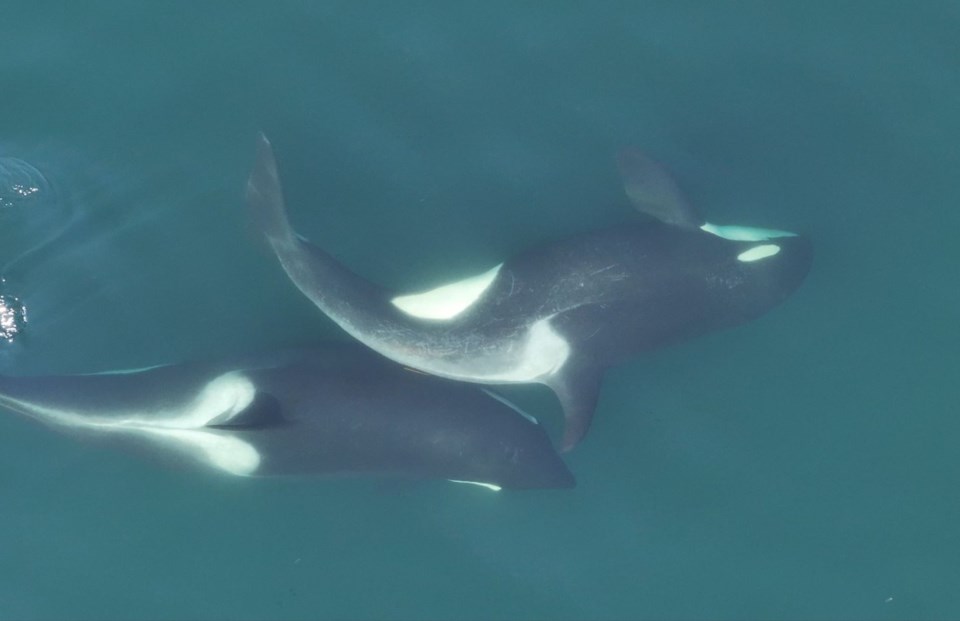In pricey spas, kelp facials and body wraps can set the esthetically inclined human back hundreds of dollars.
But in the Salish Sea off British Columbia, southern resident killer whales are also using the sea plants for what scientists suspect are grooming purposes.
Researchers who have spent years studying the endangered whales say higher quality drones helped them spot the whales regularly breaking off pieces of kelp to use as a tool, pressed between their bodies.
Michael Weiss, chair of the Center for Whale Research, based in Washington state, said the whales were spotted on video last summer rubbing bull kelp between their bodies.
Research in the new edition of the journal Current Biology hypothesizes both hygienic and social purposes.
"Other researchers have seen dolphins and whales using elements of their environment, or objects, to groom themselves. They'll rub themselves on rocks and sand and kelp to maintain their skin surface," said Weiss, lead author of the study.
"And we also have seen whales and dolphins rub on each other to potentially remove parasites and dead skin."
But the southern residents' use of both types of behaviour at once has not been seen in other whales, Weiss said.
"We haven't seen any reports of whales combining those two things and using an object to enhance this kind of social touch."
The researchers observed the behaviour in southern residents across all social groups, both sexes, and all age classes.
Weiss said other mammals, including primates, do use tools and groom each other, but the whales' situation is distinct, in part because two animals are getting shared benefits.
"We don't have one whale with a stick scratching the other one. We have two whales with kelp between them simultaneously rubbing it against each other. And that's really unique," he said
He said primates rarely use grooming tools unless given them by humans.
"This kind of widespread, common behaviour in the population — everyone seems to be doing it in the southern residents, they're doing it all the time — there's not really any examples of anything like that, where it's become commonplace in social interactions to use a tool to enhance that interaction," he said.
"So I think it's really special and it's a brand new context for tool use in marine mammals. It's not something we've seen marine mammals use tools for before."
Weiss said the next steps for researchers are seeing how the skill is learned, understanding more about the whales' skin conditions, and taking a closer look at the social bonds the use of the kelp helps create.
"Seeing if whales who perform this behaviour together are more likely to then co-operate in other ways later. Are they more likely to chase fish together? Are they more likely to share food with one another, or do other social interactions?" he said.
The southern resident killer whales are a critically endangered, with fewer than 80 individuals left in the Pacific Northwest.
Weiss said the research is another example of why it is important to protect the population.
"When we're talking about conserving this population, we're not talking just about conserving 73 individual animals. We're talking about conserving a unique culture with unique behaviours that if we lost them, we'd never see again," he said.
"This is just another example of the fact that these separate populations of whales are not interchangeable, they're not fungible. They are special and losing them is a loss for the world. It's a loss of something unique from the world."
This report by The Canadian Press was first published June 23, 2025
Ashley Joannou, The Canadian Press



